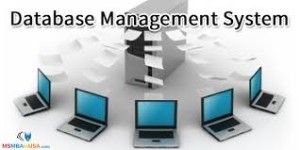 81. Briefly explain the five components of an Information Systems Architecture and their relationship to data.
81. Briefly explain the five components of an Information Systems Architecture and their relationship to data.
Processes that manipulate the data. Networks that transport the data. People who process and use the data. Events and point in time when processes need to be performed with the data. Reasons for events and rules to govern the processing of the data.
82. Explain the systems development life cycle.
This is the traditional method to develop, maintain, and replace information systems that includes the project identification and selection, project initiation and planning, analysis, logical design, physical design, implementation, and maintenance steps. The process is a series of steps that are ideally completed in a linear fashion. In reality, the process is not linear and the process requires steps to be revisited and an overlap of steps.
83. Explain the differences of the two principal types of packaged data models.
Universal data models are common to many organizations. These models may be useful for similar functions that are used across companies or organizations such as purchasing and accounting. Industry-specific data models are used by specific industries.
84. Who can make up a systems or database team? Provide a brief explanation of each.
The team includes a system analyst who identifies the need for information services to meet opportunities of the business, database analysts who design the database, users who monitor that the system will meet their needs, programmers who write computer programs, database and data administrators who have responsibility for current and future databases and other technical experts
85. Briefly describe the six database activities that occur during the systems development life cycle.
The enterprise modeling that analyzes the current data processing. Conceptual data modeling that identifies entities, relationships, and attributes. The logical database design that identifies data integrity and security requirements. The physical database design and definition that defines the database to a DBMS. The database implementation that installs and converts data from prior systems. Database maintenance that fixes errors in the database and database applications.
86. Briefly explain an ERD.
An ERD is a detailed logical representation of the data for an organization. The ERD includes entities, attributes, relationships, and cardinalities. An ERD is the mechanism where an entity-relationship model is displayed.
87. List some of the chrematistics of good data definitions.
Definitions are gathered from the same sources and should be accompanied diagrams. A definition will include special conditions, examples, how the data is created, whether the data can change, who owns the data, whether the data is optional, and whether the data can be broken into something more atomic.
88. Explain minimum and maximum cardinality.
Minimum cardinality is the minimum number of instances of an entity that can be associated with each instance of another entity. Maximum cardinality is the maximum number of instances of an entity that can be associated with each instance of another entity.
89. Describe the naming of Relationships?
Relationships are verb phrases and represent actions usually in the present tense. The name should exclude vague names such as “has”. The name should explain what action is being taken and possibly why it is important.
90. Why is modeling time-dependent data with a time stamp important?
The values of data may change. A time stamp helps to ensure that the previous value of the data stays in the database after it has changed so that you can see the before and after values through time. Without a time stamp, you will most likely lose some of the history.